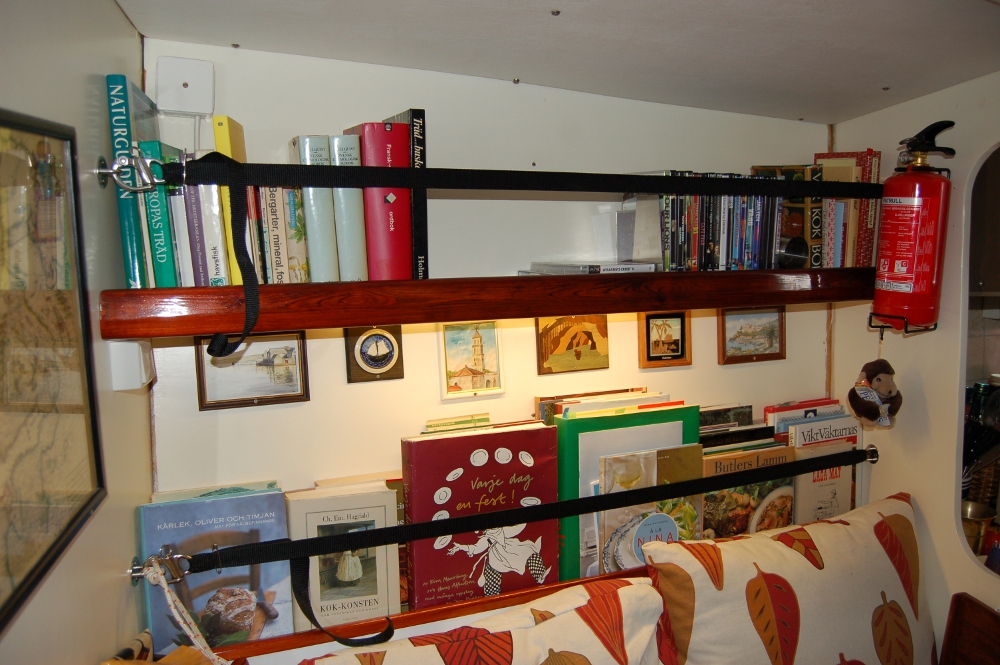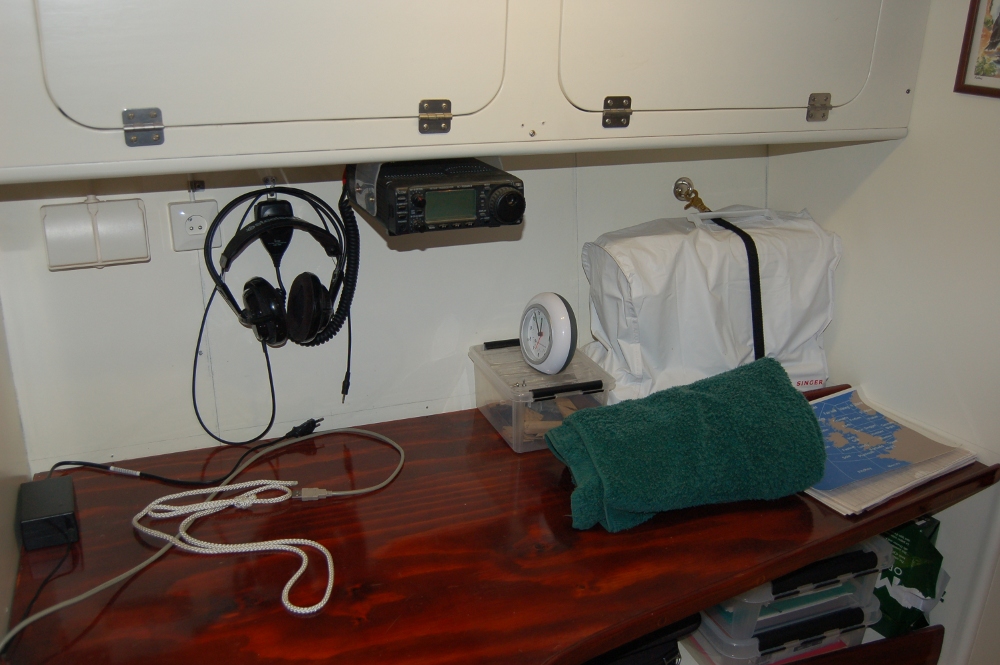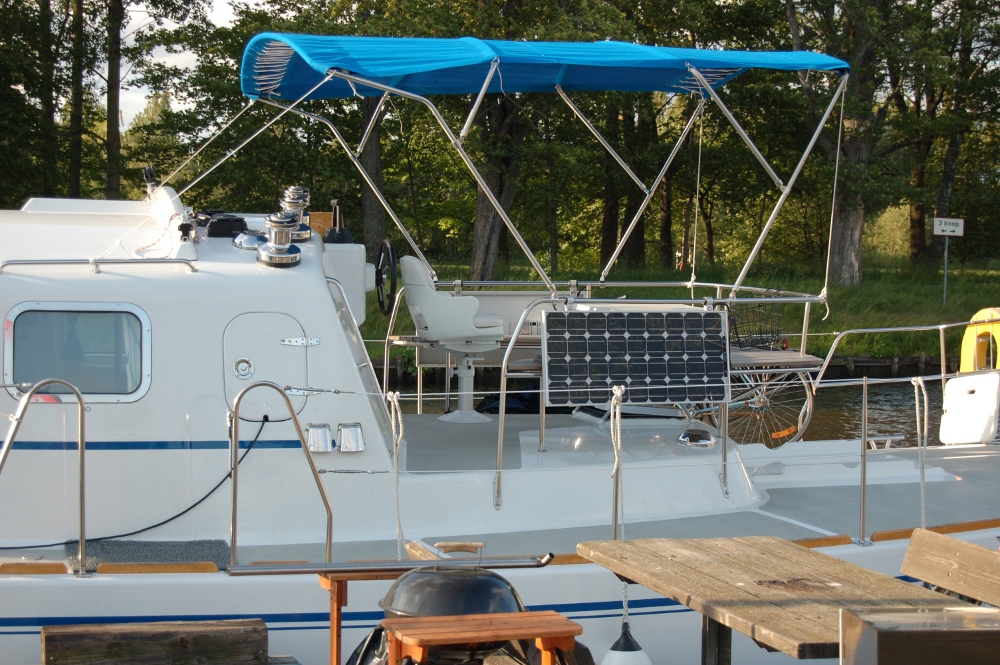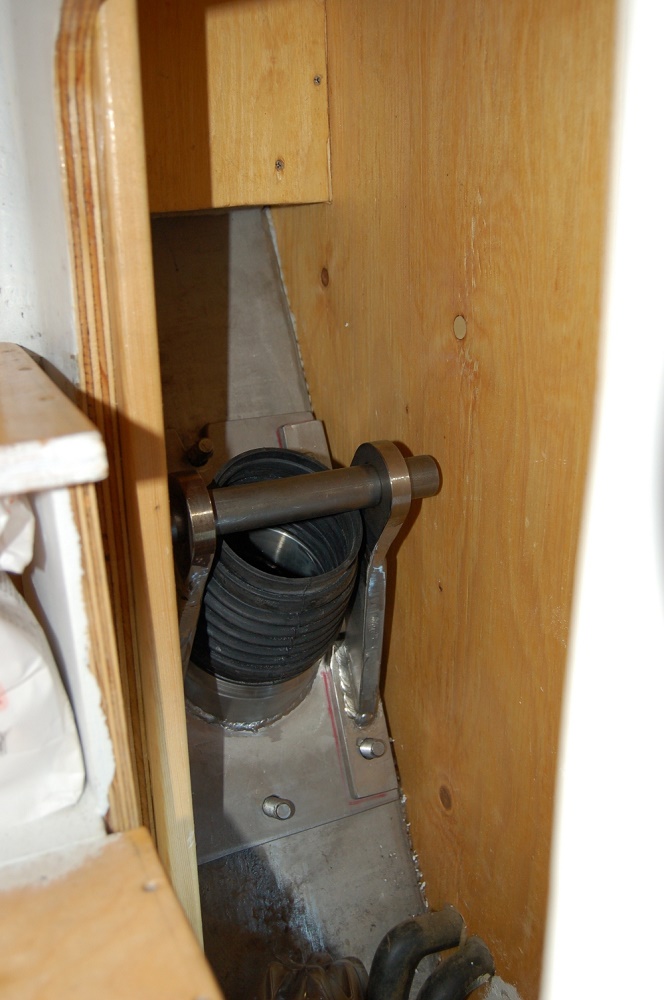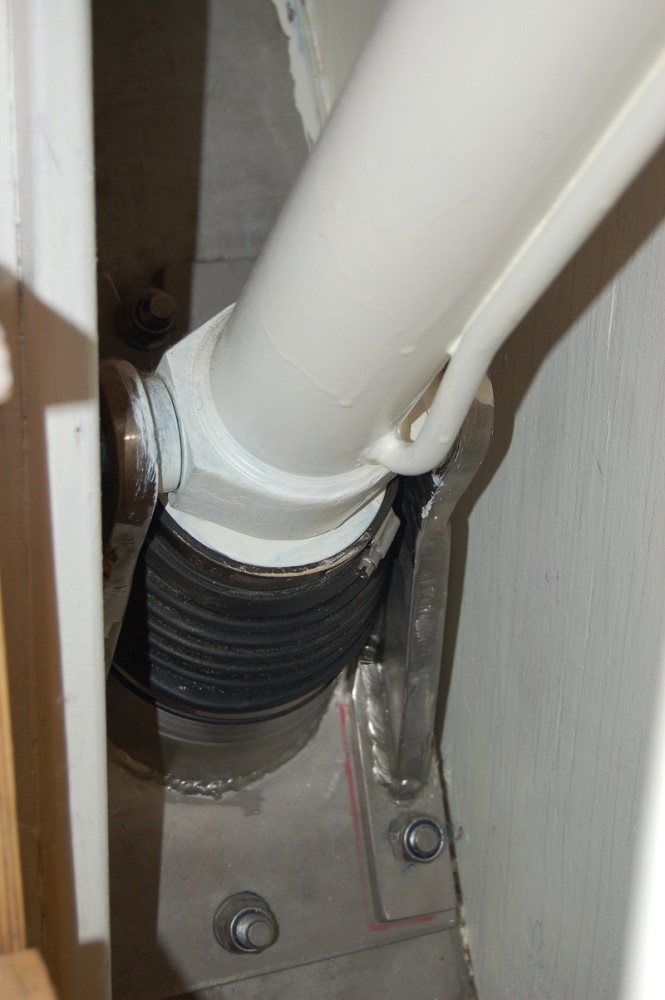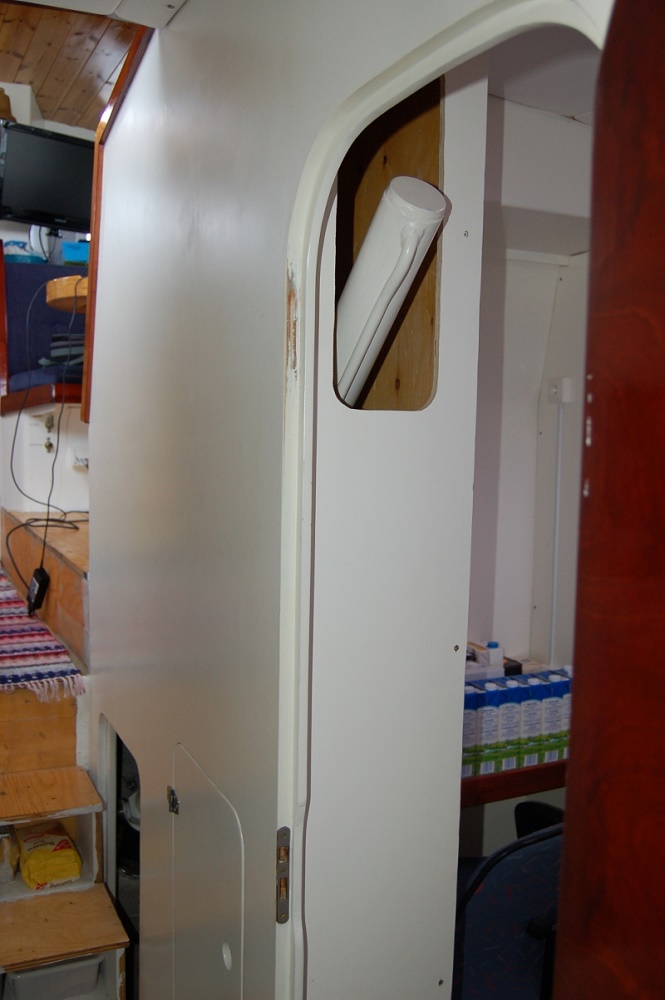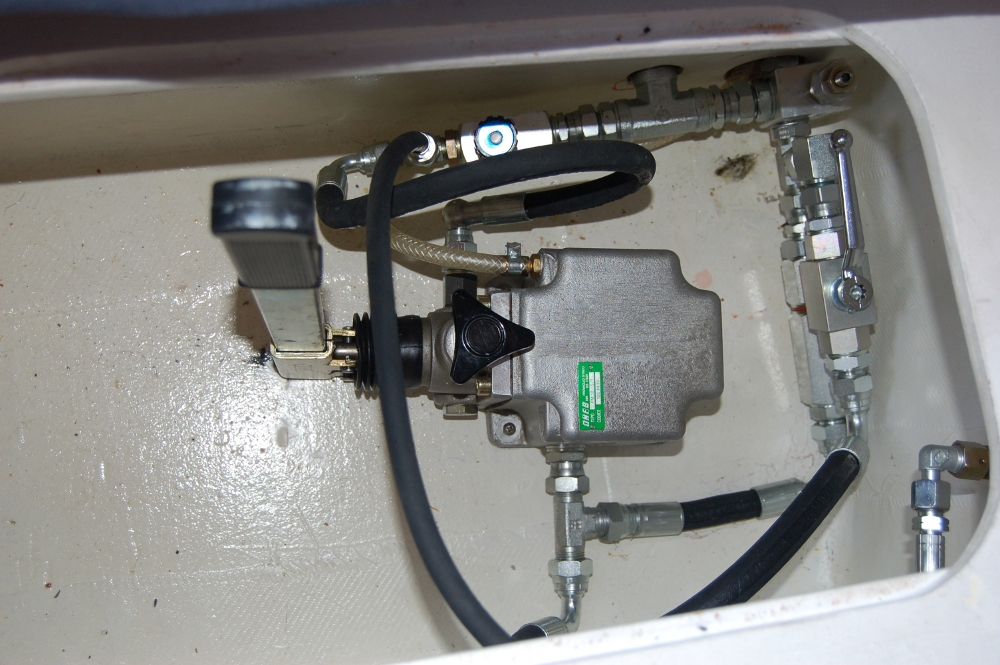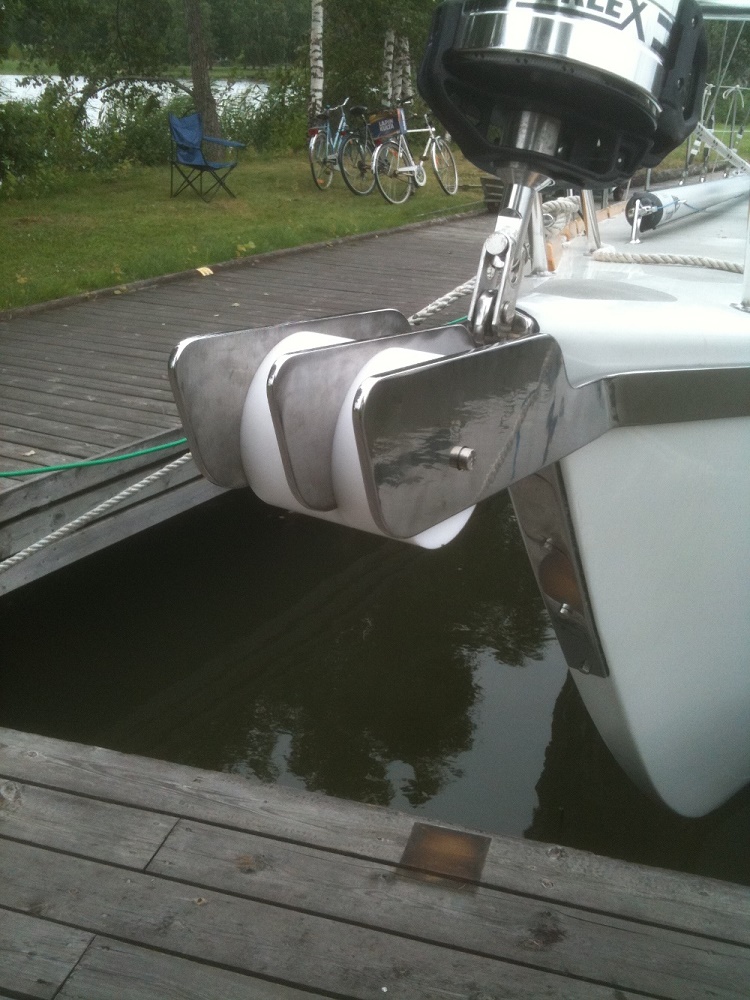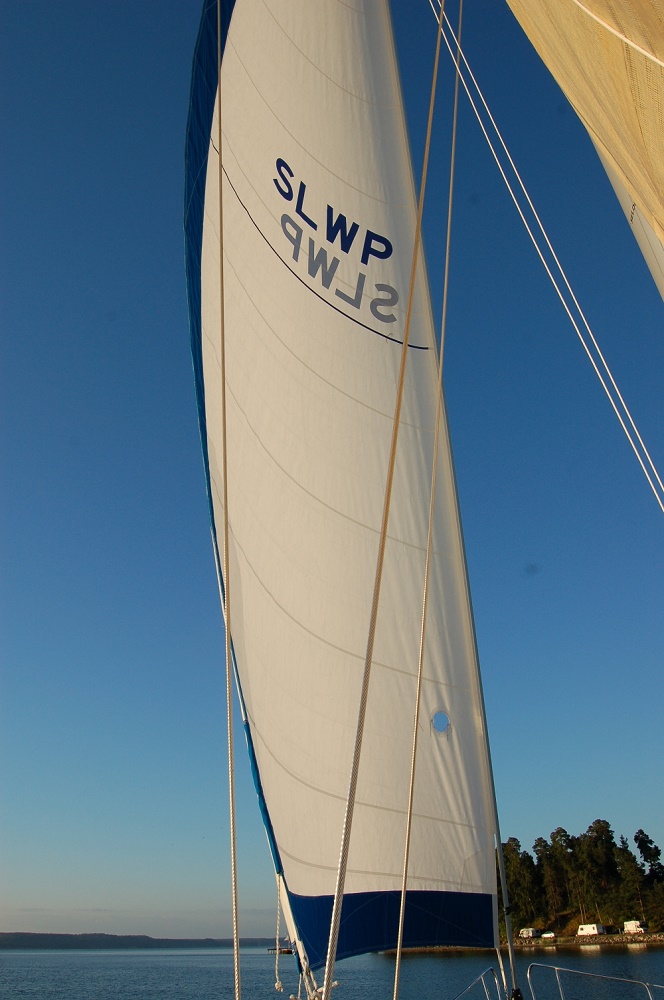
 2011
2011


Final equipment
by Johan Kjellander 2011, 2014
February - August 2011
Bird of Passage has now left Sweden and is on her way south. We don't know when she'll be back, if ever. That means that there is not much more to tell about her construction. This might be the last update to “The story about Bird of Passage” but there is a chance that a new blog will show up on toan.se later with reports about her voyages. Until then, here is a report of the last pieces of work that we did during spring 2011 and a short report of her summer trip from Sweden to England.
Everything in a sailboat needs a place of its own where it is securely fastened. After having all books in one of our book shelfs falling out over and over, we secured them with black straps and metal fasteners. Our sewing machine is fastened the same way. To the left of the sewing machine is our HF (SSB) radio, an ICOM 706 MkII. Our call sign is SLWP. The back stay has isolators and is used as antenna. Seems to work fine, had a good contact from Holland to north of Sweden a few days ago.
From 4 pipes of 25 mm stainless tubing, 9 meters of blue canvas and some fittings I made this Bimini-top. A good friend helped me with pipe bending and sewing. The Bimini covers the entire bridge deck and protects from sun and rain. Once finished we have never taken it down. We even had it up in a 16 m/s (apparent wind speed) gale along the Dutch coast ! The Bimini really makes a lot of difference.
The keel hydraulics was finished during May. A standard Volvo Penta rubber bellow was mounted on the keel box and the hydraulic cylinder was then mounted in it's fittings. As the keel goes up and down the cylinder tilts 5-10 degrees and this movement is taken up by the rubber bellow. A small miscalculation lead to a hole having to be made into the mid cabin to let the end of the cylinder move freely. The nice thing with this is that you see the tilt angle of the cylinder and thereby easily determine if the keel is up or down or someway in between.
The cylinder is operated through a hand pump and a system of hydraulic valves that are designed to keep the keel in position but still let her swing up if running aground. Next year an electric pump will be fitted. The system seems to work very fine so far. With the keel down the draft is 3.2 meters. A boat that deep has problems in many marinas, not to say the canals in Holland. With the keel up she is only 1.6 deep and that is no problem at all. Sailing with the keel up is ok with the wind from behind. Speed actually increases somewhat with the keel up. This also saves fuel when motoring. With the wind against you the keel needs to be down to get a reasonable sailing result without too much drift. With the keel down she is also more comfortable in rough seas.
Anchoring is an important issue. I still haven't purchased a proper windlass but I have a 27 kg CQR anchor and I made this bowsprit to harbour it. At the stern we have a 22 kg CQR that we have used a lot. Bird of Passage actually behaves much better with an anchor in the stern than at the bow when anchoring on the swing so there is a chance that we will mount a windlass in the stern as well.
Sails are expensive but we really needed a new foresail so I ordered one last October and it was delivered now in June. 65 square meters, 500 gram/m2 dacron, blue UV-protection and designed for the Furlex reefing system. So far it has performed well.
It has been a fantastic journey to build Bird of Passage but that journey is now over. After almost 15 years we are now sailing again and that is something different. Today is the 18:th of August 2011 and Tove left a few days ago to go back to work in Sweden. Martin and I will find a good winter harbor for the Bird and then I will also return to Sweden for work during the winter. Tove and I will visit Birdie by car over christmas and next spring we will continue south or maybe north through the Caledonian canal first...There is so much fun to do !
